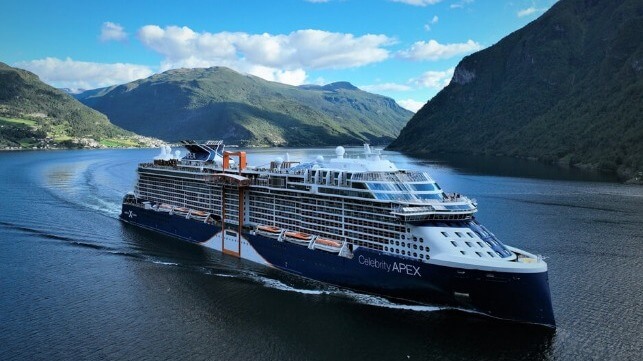Norway Sets Phased-in Dates for Zero Emission Shipping in Fjords

The Norwegian government has finalized the dates for its planned regulations to require zero-emission shipping at its World Heritage sites in the Norwegian fjords. The aggressive regulations are delaying the date for the largest cruise ships but are the next step in efforts that have also included a ban on heavy fuel oil in the Arctic.
The proposal for the requirement for zero emission shipping at the World Heritage locations, including five fjords, Naerøyfjorden, Aurlandsfjorden, Geirangerfjorden, Sunnylvsfjorden and Tafjorden, was first promoted in 2018. At the time, the government set 2026 as a target while admitting that the technology would still need to be developed.
The Storting (Norway’s Parliament) finalized the rules this week setting a phased-in schedule. Cruise ships and ferries under 10,000 gross tons will have to operate with zero emissions by January 1, 2026. For the large ships, the implementation is delayed until January 1, 2032.
Norway’s Climate and Environment Minster Andreas Bjelland Eriksen says the regulation will “both drive technology and contribute to the development of zero-emission solutions.” The Norwegian government has been taking an active role in support of the development of new technologies and alternative power including hydrogen and high-capacity batteries.
The phased-in approach and delay for the largest ships however is a recognition that “sufficient technology does not yet exist for the largest ships.” As part of the regulation, Norway will permit ships to use biogas to meet the emission requirement while operators such as Havila which runs coastal cruises are already testing batteries. In June 2022, the 15,800 gross ton Havila Castor set a new record operating for three hours entirely on batteries in Geirangerfjord.
As a second part of the requirement, Norway is also adopting rules for the use of shore power where it is available. The Storting decided that the state must ensure the establishment of onshore power in Flam, a popular destination for the ships at the innermost part of the Aurlandsfjord, a tributary of Norway's longest and deepest fjord, the Sognefjord. The government will contribute to the funding for establishing shore power at the port.
Starting in 2024, Norway ended an exemption for cargo ships traveling in the Arctic region from a 2022 ban on heavy fuels. They imposed the first penalties on the rules this summer. Although the purpose is to prevent the danger of oil spills in the sensitive region, the ban on carrying or using heavy fuels however also contributed to a reduction in emissions in the region.
This comes as Norway has experienced a surge in cruise ship calls. Like most destinations, after the pandemic, the number of cruise tourists has grown dramatically. The association Cruise Norway said the country topped six million cruise passengers in 2023 up by a third from 2022. They forecasted a further four percent growth in 2024 while noting the number of ship calls is also growing.
